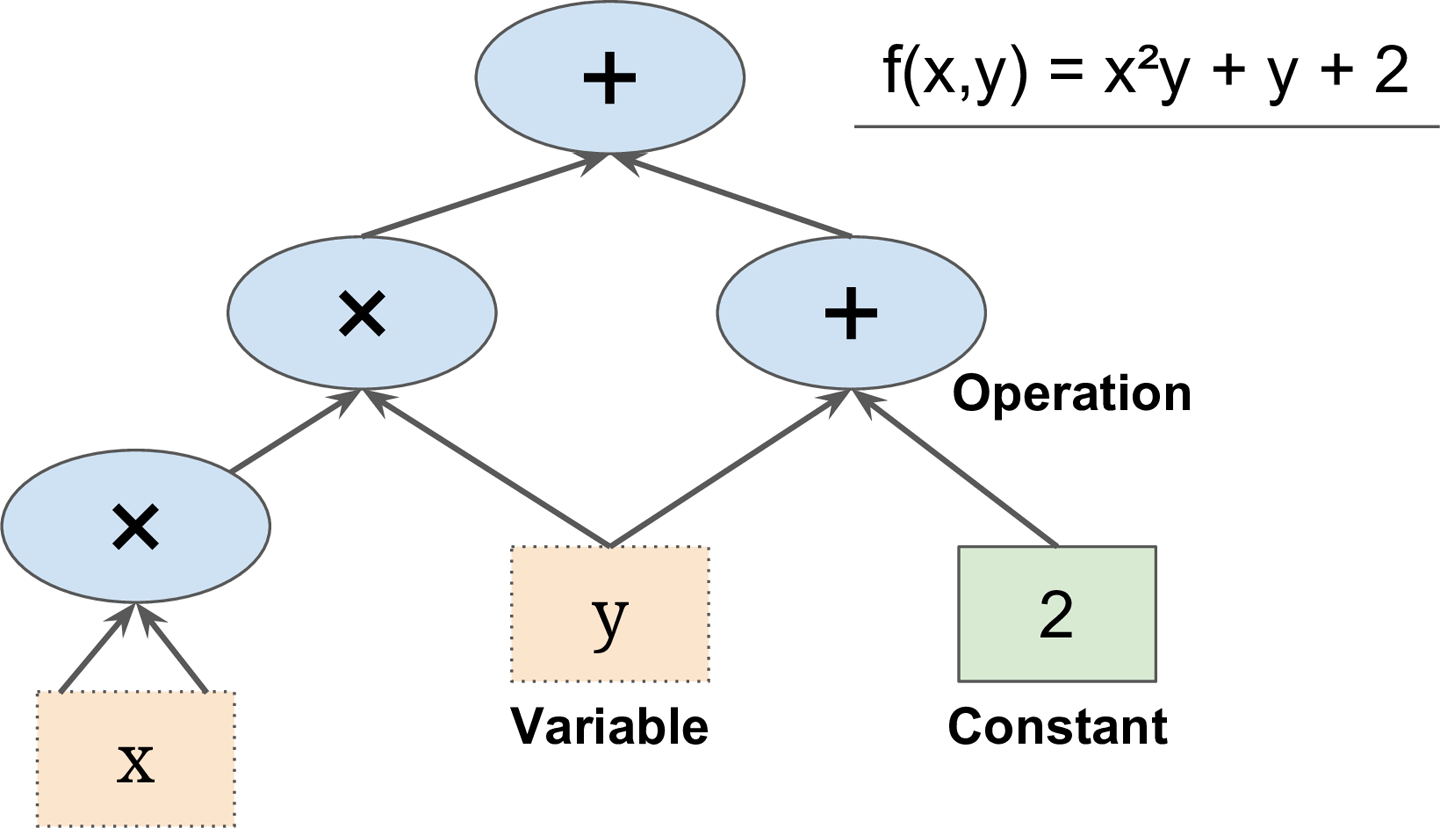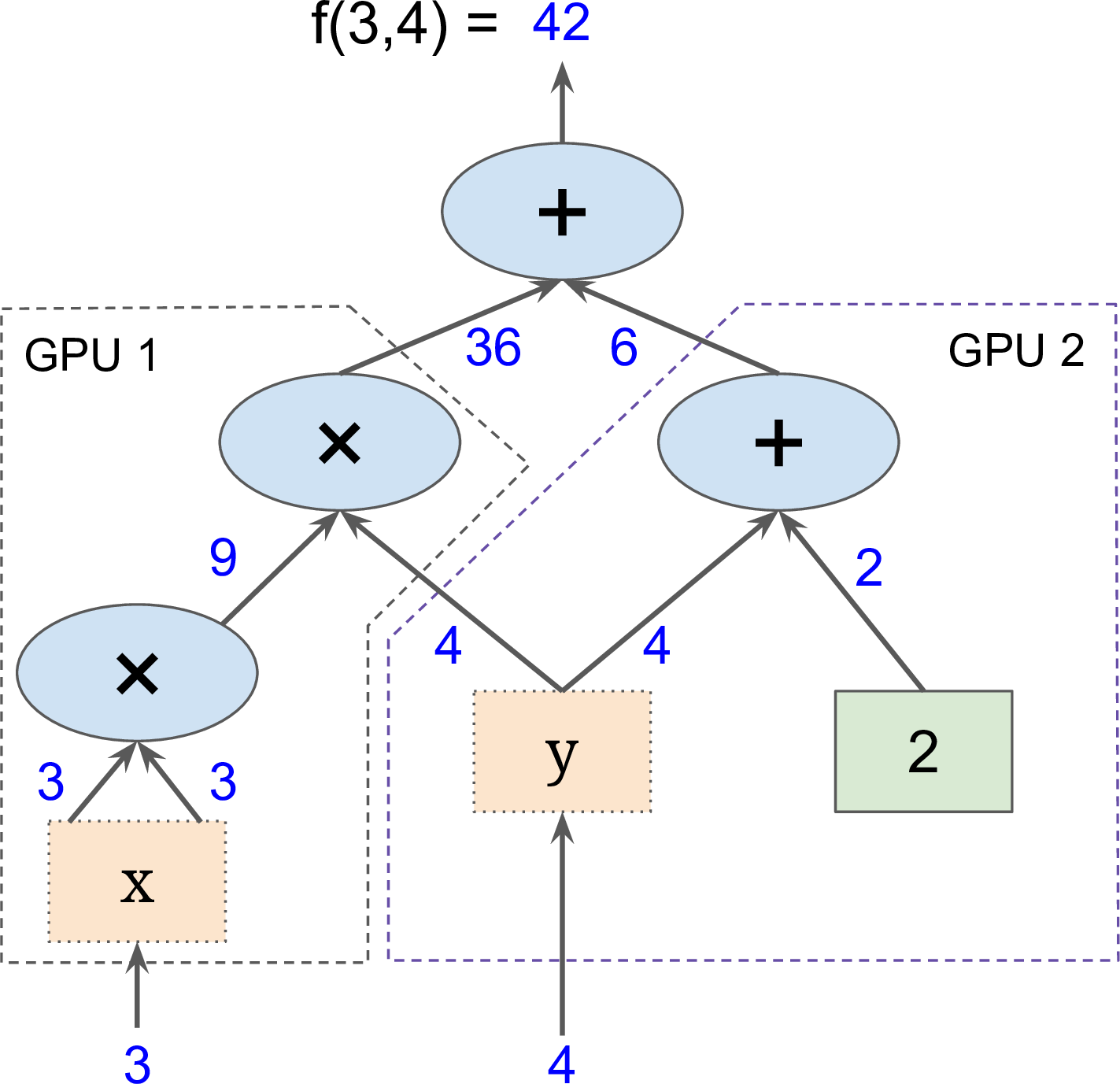Getting started with TensorFlow
TensorFlow is a powerful open source software library for numerical computation, particularly well suited and fine-tuned for large-scale Machine Learning. Its basic principle is simple: you first define in Python a graph of computations to perform (for example, the one in Figure 1-1), and then TensorFlow takes that graph and runs it efficiently using optimized C++ code.

Figure 1-1. A simple computation graph
Most importantly, it is possible to break up the graph into several chunks and run them in parallel across multiple CPUs or GPUs (as shown in Figure 1-2). TensorFlow also supports distributed computing, so you can train colossal neural networks on humongous training sets in a reasonable amount of time by splitting the computations across hundreds of servers. TensorFlow can train a network with millions of parameters on a training set composed of billions of instances with millions of features each. This should come as no surprise, since TensorFlow was developed by the Google Brain team and it powers many of Google’s large-scale services, such as Google Cloud Speech, Google Photos, and Google Search.

Figure 1-2. Parallel computation on multiple CPUs/GPUs/servers
When TensorFlow was open-sourced in November 2015, there were already many popular ...
Get Getting started with TensorFlow now with the O’Reilly learning platform.
O’Reilly members experience books, live events, courses curated by job role, and more from O’Reilly and nearly 200 top publishers.

